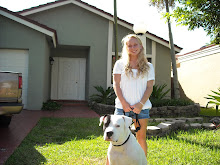Vivid 7 from GE Healthcare
I started my new rotation at a Pediatric Cardiovascular Clinic. There are 3 Vivid 7 machines. Being a student, I've only scanned 2 patient's on average a day, so far at the site. The site only uses 2D imaging, Doppler, and Mmode modalities and none of the other advanced packages Vivid 7 has to offer. From my observations, Vivid 7 Technology from GE Healthcare has great imaging quality.The only complaint I have heard from the other Techs is that there is a delay between the transfer from machine to spooler to reading station.
The Vivid 7 dimension 06 has 4D , TSI (Tissue Synchronization Imaging), and Automated Function Imaging capabilities. TSI provides information on asynchrony, or dyssynchrony, by analyzing the tissue velocity signals. Dyssynchrony describes how some areas of the heart may contract before others and is usually found in cardiomyopathies and ischemic disease. A slower wall motion will produce a slower peak velocity. The application presents the information in a 'Bull's Eye' format with 12 segments and a color map. Vivid 7 has 4D quantification of LV volume using 16 segments and 4D colorflow imaging. It is important to note that the transducer used for 4D, the 3V transducer that has a higher number of piezoelectric elements, is suboptimal for pediatric use. Automated Function Imaging provides information of left ventricular function by analyzing peak systolic based on strain. Strain rate imaging is based on the difference between tissue doppler velocities between sample volumes divided by the distance between them. Strain is the percentage change in length. The sonographer sees the data in four different modes: 2Dimage, Mmode, strain graph, and Bull's eye. Accurate measurement is dependent on careful data recording.
Vivid 7 acquires and stores it's images in raw data form, allowing for measuring or adding colorflow or optimized at any time after the scan.The claim 'MPEGvue allows you to export more compressed studies...eVue simplifies PC setup for remote ineractive image monitoring...DICOM connectivity, with embedded raw-data storage, permits post-exam quantitative analysis on the Vivid 7 Dimension '06 system or the EchoPAC Dimension '06 workstation.' Storing in raw form is definitely a plus allowing for work on the images after the fact, but the lab where I am at now has issues with taking too long to transfer over.



